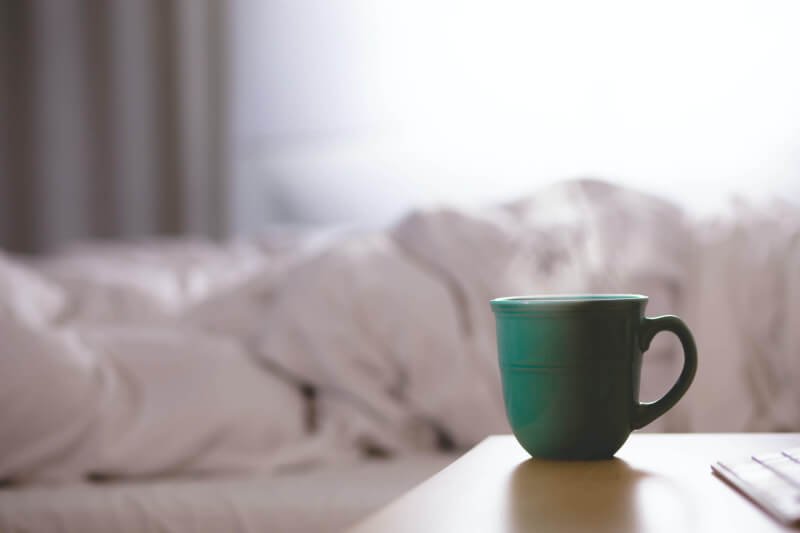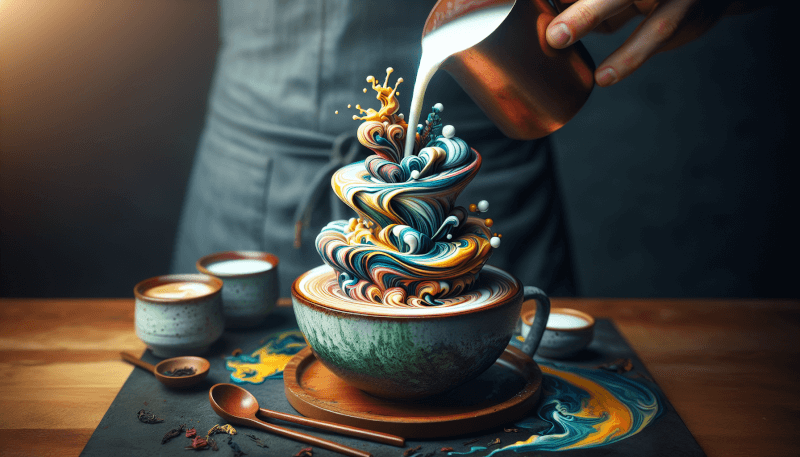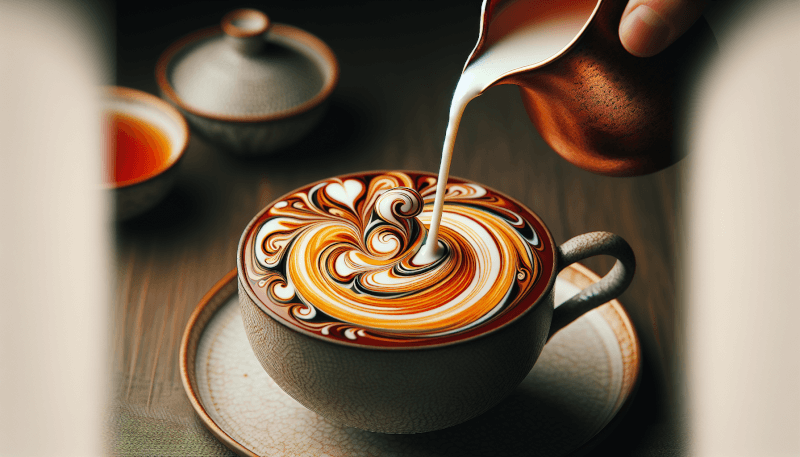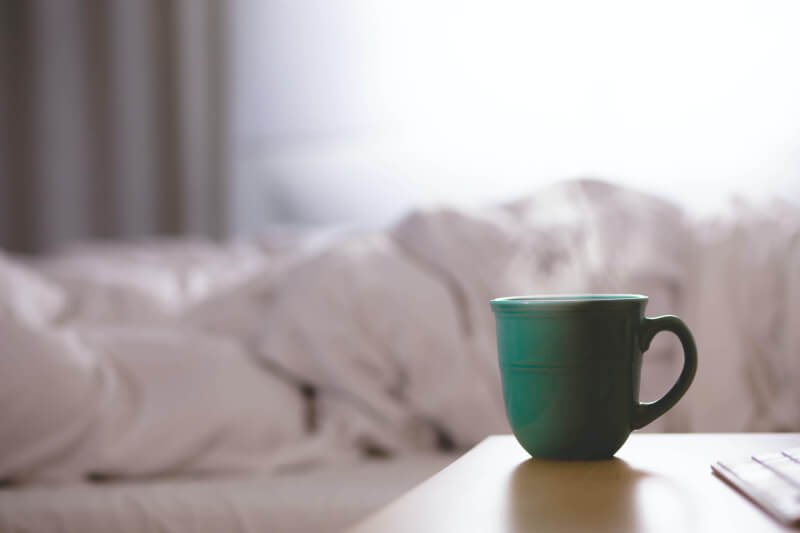Are you a tea lover looking to add a twist to your usual cup of goodness? Look no further! In this article, we will take you on a journey of exploring the art of tea latte brewing. From the perfect balance between tea and milk to the various flavor combinations that will tickle your taste buds, we have got you covered. So grab a cozy seat and get ready to elevate your tea experience to a whole new level of deliciousness.

Choosing the Right Tea
When it comes to making a delicious tea latte, selecting the right tea is crucial. There are so many different types of tea to choose from, each with its own unique flavors and characteristics. To make an informed choice, it’s important to understand the differences between the various types of tea.
Understanding Different Types of Tea
Tea can be broadly categorized into several main types: black, green, oolong, white, and herbal. Each type is processed differently, resulting in distinct flavors and aromas.
Black tea is fully oxidized, resulting in a robust and bold flavor. It is often paired with milk in tea lattes to create a rich and creamy beverage. Green tea, on the other hand, is not oxidized, resulting in a lighter and slightly grassy flavor. Oolong tea falls somewhere in between, with a partially oxidized profile that offers a range of flavors from floral to fruity.
White tea is the least processed of all, with a delicate and subtle flavor. Herbal teas, on the other hand, are not technically tea at all, as they are made from herbs or botanicals rather than Camellia sinensis leaves. Herbal teas offer a wide array of flavors, from soothing chamomile to invigorating peppermint.
When selecting a tea for your latte, consider your personal preference for flavor profiles. Experiment with different types of tea to find the perfect match for your taste buds.
Selecting Tea for Latte Brewing
Certain teas lend themselves particularly well to being used in tea lattes. For a classic black tea latte, choose a strong and malty black tea like Assam or Ceylon. These teas have enough boldness to stand up to the milk and create a harmonious and flavorful blend.
Green tea lattes, on the other hand, require a more delicate green tea. Japanese matcha is a popular choice for green tea lattes as it provides a vibrant green color and a slightly earthy flavor. Sencha, with its grassy and slightly sweet profile, is another great option.
For those who prefer a floral and aromatic tea latte, consider using oolong tea. Tie Guan Yin and Jin Xuan are two oolong teas that pair beautifully with milk, offering a creamy and fragrant experience.
Preparing the Tea Leaves
Once you’ve chosen the perfect tea for your latte, it’s time to prepare the tea leaves. Proper preparation is essential to ensure that the flavors are extracted optimally during the brewing process.
Loose Leaf vs. Tea Bags
One of the first decisions you’ll need to make is whether to use loose leaf tea or tea bags. While tea bags are convenient and easy to use, they often contain lower quality tea leaves that may not provide the same depth of flavor. On the other hand, loose leaf tea offers a fuller and more nuanced taste as the leaves have more space to unfurl and steep properly.
If you choose to use loose leaf tea, consider investing in a good quality tea infuser or teapot with a built-in infuser. These tools allow the tea leaves to fully expand, resulting in a more flavorful brew. However, if you prefer the convenience of tea bags, look for high-quality pyramid-shaped bags that contain whole tea leaves rather than dust or fannings.
Measuring the Proper Amount
To achieve the perfect balance of flavors in your tea latte, it’s important to measure the proper amount of tea leaves. The general rule of thumb is to use 1 to 2 teaspoons of loose leaf tea or one tea bag per 8-ounce cup of water. However, this can vary depending on personal preference and the specific tea being used.
For a stronger tea latte, increase the amount of tea leaves slightly. If you prefer a milder flavor, decrease the amount accordingly. It’s all about finding the perfect balance that suits your taste buds.
Infusing the Tea Leaves
Once you have measured the tea leaves, it’s time to infuse them in hot water. The ideal temperature and steeping time can vary depending on the type of tea you are using, so it’s important to follow the specific instructions for each tea.
As a general guideline, black tea should be steeped in water heated to a full boil (212°F) for 3 to 5 minutes. Green tea requires a lower temperature (around 175°F) and a shorter steeping time (1 to 2 minutes) to avoid bitter flavors. Oolong tea falls somewhere in between, typically steeped at around 190°F for 2 to 4 minutes.
Remember to follow the recommended steeping time closely to avoid over-extraction or under-extraction of the tea. Once the tea has steeped, strain the leaves or remove the tea bag to prepare it for the next step of the tea latte brewing process.
Frothing Milk
Now that you have prepared the tea, it’s time to move on to creating the creamy and frothy milk component of the tea latte. Frothing milk might seem like a daunting task, but with the right techniques and some practice, anyone can achieve barista-worthy results.
Choosing the Milk Type
The type of milk you choose can greatly influence the taste and texture of your tea latte. Different milk options offer different levels of creaminess and sweetness, so it’s important to consider your preferences and dietary restrictions when making a selection.
Whole milk is the traditional choice for tea lattes, as it provides a rich and velvety texture. However, if you are looking for a lighter option, you can use low-fat or skim milk. Alternatively, if you prefer a non-dairy option, there is a wide variety of plant-based milks available, such as almond, soy, or oat milk.
Experiment with different milk types to find the one that complements your chosen tea and suits your taste buds. Each milk variety will bring its own unique flavor nuances to the tea latte.
Heating and Frothing Techniques
To achieve the perfect frothed milk for your tea latte, you will need to heat the milk and create microfoam. Microfoam refers to the creamy and velvety texture that is created when the milk proteins are properly aerated.
There are several methods for heating and frothing milk. One popular technique is to use a milk frother or a steam wand on an espresso machine. These tools allow for precise temperature control and create the ideal amount of froth.
If you don’t have access to specialized equipment, you can still achieve great results using a stovetop milk frother or even a handheld frother. Heat the milk gently in a saucepan over medium heat until it reaches the desired temperature. Then, using the frother of your choice, froth the milk by moving the frother rapidly in an up-and-down motion.
Creating Microfoam
To achieve that coveted microfoam texture, it’s important to pay attention to the technique. Start by submerging the frother just below the surface of the milk, then gradually move it towards the surface as the milk froths. This will create a smooth and creamy texture throughout the milk.
Avoid creating large bubbles or foam that sits on top of the milk. The goal is to create tiny bubbles that are evenly distributed throughout the milk, resulting in a velvety texture that can be easily poured and integrated into the tea latte.
With a bit of practice, you’ll be able to perfect your milk frothing skills and create beautiful, latte art-worthy foam for your tea latte.
Brewing the Perfect Tea Latte
Now that you have prepared both the tea and the frothed milk, it’s time to bring them together to create the ultimate tea latte. Brewing the perfect tea latte involves several key steps, from steeping time and water temperature to straining the tea and combining it with the frothed milk.
Steeping Time and Water Temperature
When it comes to steeping time and water temperature, it’s important to refer back to the specific instructions for the tea you have chosen. Different types of tea require different steeping times and temperatures in order to extract the optimal flavors.
As a general guideline, black tea typically requires a steeping time of 3 to 5 minutes at a full boil (212°F). Green tea should be steeped for 1 to 2 minutes at a lower temperature (175°F) to avoid bitter flavors. Oolong tea falls somewhere in between, with a recommended steeping time of 2 to 4 minutes at around 190°F.
Straining the Tea
Once the tea has steeped for the appropriate amount of time, it’s time to strain the tea leaves or remove the tea bag. This step is crucial to ensure that the tea remains smooth and free of any unwanted debris.
If you are using loose leaf tea, carefully pour the brewed tea through a fine mesh strainer or use a teapot with a built-in filter. If you are using tea bags, simply remove the bags from the teacup. Avoid squeezing the tea bags, as this can result in bitter flavors being released into the tea.
Combining Tea and Frothed Milk
Now comes the moment of truth – combining the tea and frothed milk to create the perfect tea latte. Start by pouring the desired amount of brewed tea into a preheated cup or mug. Then, using a spoon to hold back the foam, slowly pour the frothed milk into the cup, allowing the foam to gently cascade over the tea.
For an extra touch of elegance, you can use a latte art technique to create patterns or designs on the surface of the foam. Start by pouring the milk into the center of the cup, then gently wiggle the cup from side to side to create intricate patterns. With practice, you can create beautiful hearts, rosettas, or even more complex designs.

Adding Flavor Enhancements
While a simple tea latte can be delicious on its own, adding flavor enhancements can take it to a whole new level. From sweeteners and syrups to spices and herbs, there are countless options for customizing your tea latte to suit your preferences.
Sweeteners and Syrups
If you prefer a sweeter tea latte, there are various sweeteners you can add to enhance the flavors. Common options include honey, agave nectar, or simple syrup. These sweeteners can be added directly to the brewed tea before adding the frothed milk.
For a more indulgent treat, flavored syrups such as vanilla, caramel, or hazelnut can be added. These syrups add a burst of sweetness and aroma to the tea latte, elevating the overall experience.
Spices and Herbs
To add a touch of complexity and a hint of warmth to your tea latte, consider incorporating spices and herbs. Cinnamon, nutmeg, and cardamom are classic choices that pair well with black tea lattes, adding a comforting and aromatic element.
For a more herbal and refreshing twist, try adding fresh mint leaves or lavender buds to your tea latte. These herbs infuse the beverage with an invigorating fragrance and a subtle hint of floral notes.
Infusing Flavors into Milk
If you prefer to infuse flavors directly into the milk, there are various techniques you can try. For example, you can steep a cinnamon stick or a few cloves in the milk as it’s being heated to infuse it with warm and comforting flavors. Alternatively, gently heat the milk with a pinch of loose leaf tea, such as Earl Grey, to infuse it with an additional layer of tea aroma.
By experimenting with different flavor combinations, you can create a tea latte that is uniquely yours, tailored to your taste preferences and mood.
Experimenting with Tea Latte Recipes
Tea lattes offer a wonderful canvas for creativity in the world of beverages. While classic black tea, matcha, and Earl Grey are popular options, there are numerous other tea latte recipes waiting to be explored.
Classic Chai Tea Latte
If you enjoy a spicy and aromatic tea experience, a classic chai tea latte might be just the right choice. Combining black tea with a blend of spices like cinnamon, cardamom, cloves, ginger, and black peppercorns, this tea latte is the epitome of comfort in a cup. Brew the black tea with the spices, then add the frothed milk and a touch of sweetener for a truly indulgent treat.
Matcha Green Tea Latte
Matcha green tea lattes have become incredibly popular in recent years, and for good reason. The vibrant green color and rich umami flavors of matcha combined with creamy milk make for a luxurious and energizing beverage. Simply sift matcha powder into a cup, add a small amount of hot water, whisk until smooth, and then pour in the frothed milk. Adjust the sweetness to your liking, and you’ll have a delicious and vibrant matcha latte in no time.
Earl Grey Tea Latte
For those who love the floral and citrusy notes of Earl Grey tea, an Earl Grey tea latte is a must-try. Brew a strong cup of Earl Grey tea, add a touch of sweetener if desired, and then top it off with frothed milk. The bergamot aroma of Earl Grey pairs beautifully with the velvety texture of the milk, creating a delightful blend of flavors.
Feel free to experiment with these recipes or create your own unique variations. The possibilities are endless when it comes to tea latte brewing, so have fun and let your creativity shine.

Presentation and Serving
Now that you have crafted a delectable tea latte, it’s time to present it in a way that truly showcases its beauty and invites others to indulge in its flavors. The presentation and serving of a tea latte can significantly enhance the overall experience for both the eyes and the taste buds.
Using the Right Glassware
Choosing the right glassware can elevate the visual appeal of your tea latte. Opt for transparent glass cups or mugs that showcase the layers of tea and frothed milk. This allows the vibrant colors and patterns to shine through, creating a visually pleasing presentation. Tall and narrow glasses are often used for iced tea lattes, while wider and shorter glasses are ideal for hot tea lattes.
Garnishing and Decorating
To add an extra touch of elegance and flavor, consider garnishing your tea latte with various toppings. A sprinkle of cocoa powder or cinnamon can create a beautiful contrast on top of the frothy milk. Fresh mint leaves, edible flowers, or citrus zest can also be used to garnish the latte, adding a pop of color and an enticing aroma.
For the more adventurous, you can even try your hand at latte art. Using a fine-tipped tool or a toothpick, carefully create decorative patterns on the foam surface. Hearts, flowers, or even your initials – the possibilities are endless. While it may take some practice to master the art of latte decoration, the results will be well worth the effort.
Serving Temperature
The serving temperature of a tea latte is important to consider, as it can greatly affect the taste and overall experience. For hot tea lattes, serve them at a temperature that is warm and comforting, but not scalding hot. This allows the flavors to shine through without overwhelming the palate.
For iced tea lattes, on the other hand, serve them chilled or over ice for a cool and refreshing treat. The addition of ice not only enhances the visual appeal but also helps to maintain the perfect balance between the tea and the frothed milk.
By taking the time to present your tea latte beautifully, you are not only creating a feast for the eyes but also setting the stage for a memorable tea drinking experience.
Tips and Tricks for Tea Latte Brewing
While brewing the perfect tea latte can be a delightful and rewarding process, it can also present some challenges along the way. Here are some tips and tricks to help you overcome common obstacles and improve your tea latte brewing skills.
Adjusting Tea Strength
If you find that your tea latte is too weak or too strong, don’t be afraid to adjust the tea strength by varying the amount of tea leaves or the steeping time. Increasing the amount of tea leaves or extending the steeping time will result in a stronger flavor, while decreasing either will create a milder brew.
Improving Milk Frothing Skills
If you’re struggling to achieve the perfect frothed milk consistency, practice is key. Experiment with different milk types, frothing techniques, and temperatures until you find the method that works best for you. Don’t be discouraged if your latte art doesn’t turn out perfectly right away – it takes time and practice to master the art of milk frothing.
Experimenting with Ratios
While there are general guidelines for the ratio of tea to milk in a tea latte, don’t be afraid to experiment and find the ratio that suits your taste buds. Some people prefer a tea-forward latte with a higher tea-to-milk ratio, while others enjoy a creamier and more milk-forward latte. Adjusting the ratio allows you to personalize your tea latte to your liking.
Remember, brewing the perfect tea latte is an art, and it’s all about finding the balance and flavors that resonate with you. With practice and a willingness to explore, you’ll be well on your way to becoming a tea latte connoisseur.

Tea Latte Variations
Tea lattes are incredibly versatile and can be adapted to suit various preferences and dietary restrictions. Whether you’re looking for a refreshing iced tea latte, a vegan-friendly option, or even an alcoholic tea latte, there’s a variation out there for everyone.
Iced Tea Latte
During the hot summer months or when you’re craving a cold and refreshing beverage, an iced tea latte is the perfect choice. Brew your chosen tea as usual, but instead of adding frothed milk, pour it over a glass filled with ice. For an extra touch of sweetness, a squeeze of honey or a flavored syrup can be added. Stir well and enjoy the revitalizing flavors of the iced tea latte on a warm day.
Vegan Tea Latte Options
For those following a vegan lifestyle, there are plenty of plant-based milk options available to create delicious and creamy tea lattes. Almond milk, soy milk, oat milk, and coconut milk are just a few examples of the non-dairy alternatives that can be used. Experiment with different milk types to find the one that provides the desired creaminess and complements the flavors of your chosen tea.
Alcoholic Tea Latte Mixology
For a more indulgent and spirited twist on the classic tea latte, consider mixing in some alcohol. An Irish Tea Latte, for example, combines strong black tea with Irish whiskey, brown sugar, and a dollop of whipped cream. A Spiked Matcha Latte adds a splash of vodka or rum to the vibrant matcha-infused concoction. Let your imagination run wild and create tea latte mixology masterpieces that combine your favorite teas and spirits.
History and Cultural Significance
Tea lattes have a rich history and cultural significance that stretches back centuries. Understanding the origins and traditions surrounding tea drinking can deepen your appreciation for this beloved beverage.
Origin of Tea Latte
While the exact origins of tea lattes are uncertain, it is believed that the concept of combining tea and milk dates back to ancient times. In ancient India, a beverage known as “chai” was created by simmering tea leaves with milk, spices, and sweeteners. This aromatic and spiced tea was later popularized in Europe during the British colonial era.
The modern tea latte as we know it today is largely attributed to the rise of coffeehouse culture and the influence of Asian tea traditions. Tea lattes gained popularity in the United States in the 1990s, with Starbucks introducing its now-iconic Chai Tea Latte and Green Tea Latte to its menu.
Traditional Tea Drinking Customs
Tea has long been an integral part of various cultures around the world, each with its own unique rituals and customs. In China, tea ceremonies are steeped in tradition and symbolize harmony, respect, and tranquility. The Japanese tea ceremony, known as “chanoyu,” is a highly choreographed and spiritual practice that exemplifies simplicity, beauty, and mindfulness.
In India, the bustling streets are filled with chai wallahs, who brew and serve piping hot cups of spiced chai to locals and visitors alike. In the United Kingdom, tea time is a cherished tradition, with afternoon tea gatherings accompanied by scones, finger sandwiches, and, of course, a piping hot cup of tea.
Modern Tea Culture
Tea culture continues to evolve and adapt to the changing tastes and preferences of tea enthusiasts around the world. The rise of specialty tea shops, tea festivals, and online communities has helped foster a global appreciation for the art of tea.
Tea lattes have become a popular choice among tea aficionados, offering a harmonious blend of tea and milky goodness. Baristas and tea enthusiasts alike continue to experiment with different flavors, techniques, and presentations, pushing the boundaries of what a tea latte can be.
Whether you’re sipping a classic black tea latte, exploring the vibrant world of matcha, or indulging in a unique creation of your own, tea lattes represent the perfect fusion of traditional tea drinking customs and modern innovation.
In conclusion, the art of tea latte brewing is a delightful journey that offers endless possibilities for creativity and exploration. From selecting the right tea to crafting the perfect frothed milk and adding personalized flavor enhancements, every step of the process contributes to the ultimate tea latte experience. So grab your favorite tea leaves, warm up the milk, and get ready to embark on a delicious adventure in tea latte brewing. Cheers to the perfect blend of tea and milk!



